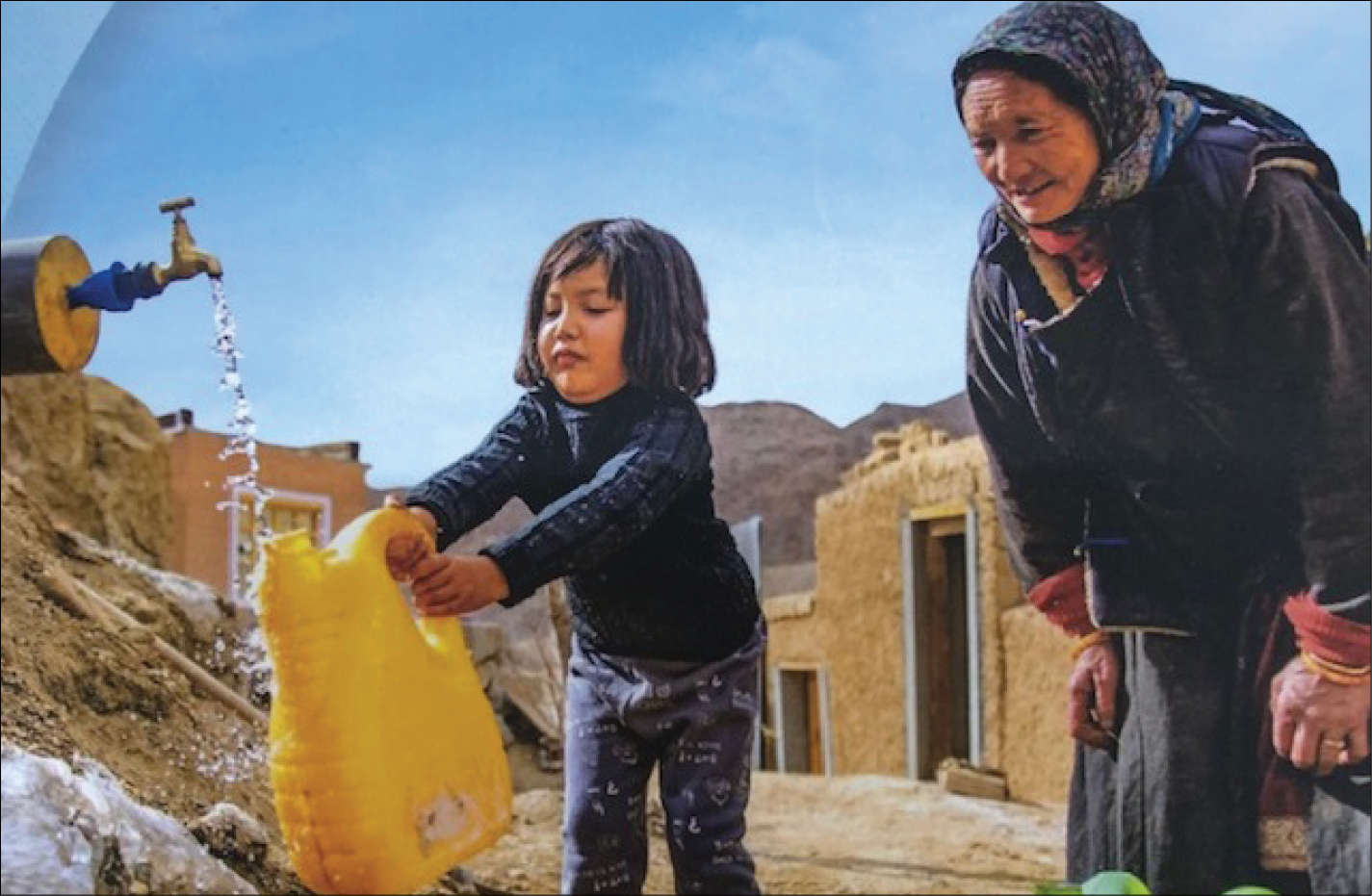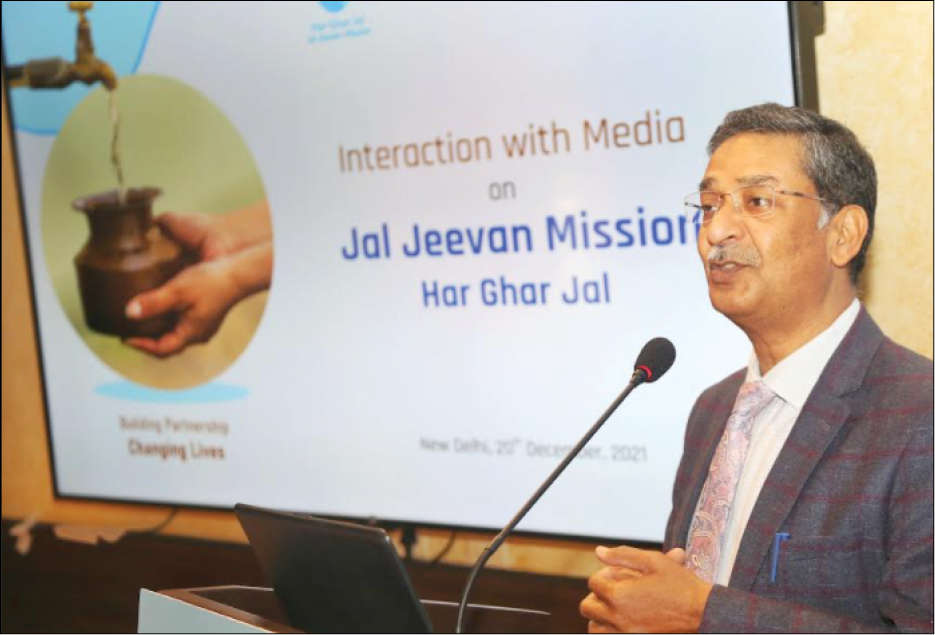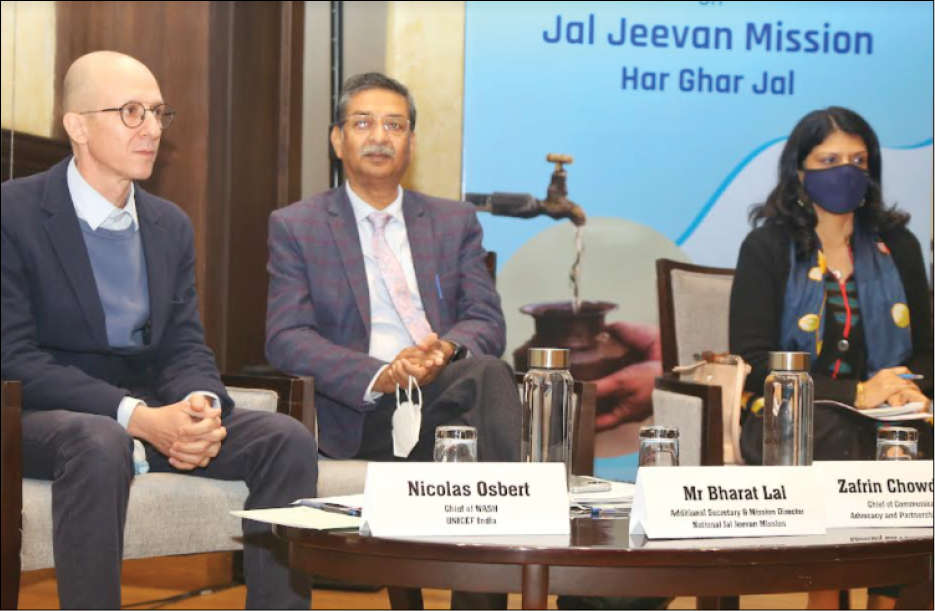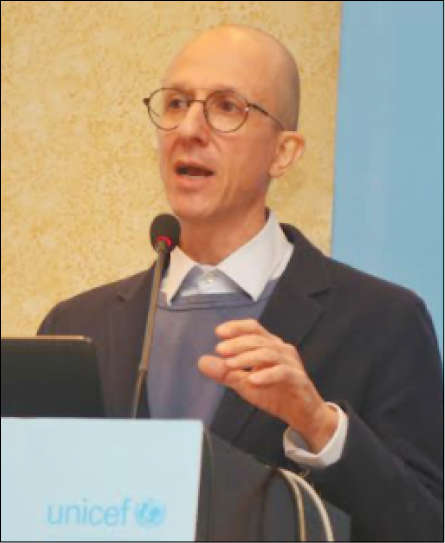


Getting villagers to help themselves bring tapped water supply to their homes across the country–from the Northeast to Southernmost tip in Kanyakumari is a surmountable challenge if only those engaged in goading them to design, build, own and operate water supply systems are successful.
That is if they are able to change the mindset of the rural masses enthuse and educate them how to eliminate the drudgery of women and children in fetching water for daily use from long distances.
It would be unfair to accuse the successive governments of doing nothing to reach tap water supply to villages near and far flung but it is clear that even after 70 years of independence lakhs of villages and villagers are yet to open a tap and get water at their premises when they want and how much they want.

But it was in the August of 2019 that Prime Minister Narendra Modi launched Jal Jeevan Mission a five-year project with a declared objective to reach tapped water supply to nearly 20 crore village households by 2024.
Recently, on completion of two years Bharat Lal, JJM director claimed significant progress in taking tap water to over 5 crore rural households and said the strategy of involving the village communities to own operate and manage their own water supply systems appeared to be working on the ground.

At the start of the mission in 2019 out of 19.20 crore rural households in the country only 3.23 Crore (17%) had tap water supply. Despite challenges faced due to Covid-19 pandemic and subsequent lockdowns over 5.44 Crore (28.31%) households have been provided with tap water supply since the launch of the mission.
The target of reaching nearly 20 crore-village households in the next three years may well be achieved if the current pace of the project gets accelerated.

Bharat Lal believed that it could be done but then admitted the challenges were many and the biggest remained the mindset issue to bring about a change in the thinking of the people and get them to think positively and support the well-intentioned project. The functioning of the project he said was completely transparent with each and every detail to projects to their sizes the money allocated and spent and the results were all out there in the public domain and accessible to the people.
The use of technology in governance and delivery of the project benefits the scale and scope of this experiment is fascinating. And technology used in monitoring the project and its progress is what makes this Mission interesting from the perspective of a development economist in the sense that a lot of useful data is generated scientifically which can be a goldmine for administrative machinery and the governance delivery departments.

JMMs uses deep technology digital governance and sensor based IOT system whose inputs are fed onto the JMM dashboard that anyone can look at for on the spot and real time progress report of the different projects under the mission.
The bottom up approach of the mission wherein the local village community plays a key role starting from planning to implementation and from management to operation and maintenance of the water supply systems is significantly different from the typical government programmes of the past. For sure it has enthused the beneficiaries into organising themselves as cooperative units and reap benefits of clean piped water supply in their homes.
A benefit that accrued to the villagers because of the JJM was that it boosted the rural economy at a time when economic activity across the country came to a grinding halt because of the Covid19 forced shutdown of the nation for a prolonged stretch. Manufacturing sector took the worst blow as did the hospitality, hotel, tourism and travel sectors leading to severe job losses and economic hardship.
At that time the agriculture sector came to the rescue of the nation as did government spending on projects in rural India like the JJM for which the government had allocated sufficient funds. This government spending put money in the hands of people engaged in various trades and occupations in the beneficiary villages that in turn generated demand for goods and services in the localities and added to economic activity.
In all the government intends to spend Rs 3.50 lakh core on Jal Jeevan Mission over the five years and it is working closely with different state governments Prime Minister Modi said in his Independence Day speech and urged that no one was left out and benefits must reach the last man in the line in the village without any discrimination and without any corruption.
Which is why the JMM strives to be transparent in all its dealings, involving the people at every step as ideators informal auditors project planners, executors and managers.
The 15th Finance Commission allocated Rs. 26,940 Crore tied grants to village bodies in 2021-22 for supply of drinking water, rainwater harvesting and water recycling and sanitation and maintenance of Open Defecation Free status.
There is an assured fund of Rs. 1.42 lakh Crore for the next 5 years from 2021-22 to 2025-26. This will supplement the ongoing efforts under JJM. What is needed is that these funds are used judiciously by the rural local bodies on rainwater harvesting strengthening of drinking water sources improving water supply grey water management and regular operation & maintenance.
The importance of JJM can be easily understood in the context of the fact that one thirds of India lives in water stressed regions and people out there suffer immensely due to water shortages and even are afflicted with contaminated water that is a serious health hazard. And even otherwise water the elixir of life is one of the most essential and yet understated resources. But one that the world has accepted as a human right.
This is why from the global perspective the Jal Jeevan Mission aiming to reach water to 20 crore rural households by 2024 is seen as one dovetailing into efforts to achieve one of the important sustainable development goals of the United Nations. The global goals aim to leave no one behind and are vital to achieving a thriving economy that works for people and the planet.
It is no surprise that help is pouring in for the “World’s Largest water supply project” from multilateral body like the UNICEF which is working closely with the central government and with state governments in over 15 states pitching in with its global experience of water management from the children’s perspective and with its technical expertise, communications and development outreach programmes.
As a representative of a global leader promoting and protecting child rights across 190 countries including India, Nicolas Osbert, WASH, UNICEF India said the UN body shared common concerns on water and views it from the perspective of the children. Availability of safe drinking water through household taps is critical for the wellbeing and holistic development of children and adequate water supply significantly improves the quality of life of women and girls.
The ultimate aim of UNICEF’s work in water, sanitation, and hygiene is to ensure that all children fulfil this right and that no child is left behind. For Osbert, JJM was like a public health programme aimed at women and children and that was the reason why UNICEF was working with the government to help in reaching the water in premises free of contamination and available when needed. In fact he said the community views must be respected on local resources and “the experts” should become the students and learn from the community and how best to manage resources. True there is a need for capacity building of villagers in different aspects of the projects planning executing, operating and monitoring the village water supply systems and their maintenance. And this is one area where outside help from the government and agencies associated with it are needed.
But overall what is needed is a behavioural change from all the stakeholders and this is where the media comes in and can play an influential role. His colleague Zafrin Chowdhury, Chief, Communication, Advocacy and Partnership, UNICEF India alluded to the many aspects and perspectives of the JJM and said the mission could be viewed from the equity approach (water is a lifeline and not a privilege) there is the gender approach there is an educational approach and bringing a change in the mindset of the people the technology at play and the like.
Lakshmana Venkat Kuchi is a senior journalist tracking social, economic, and political changes across the country.